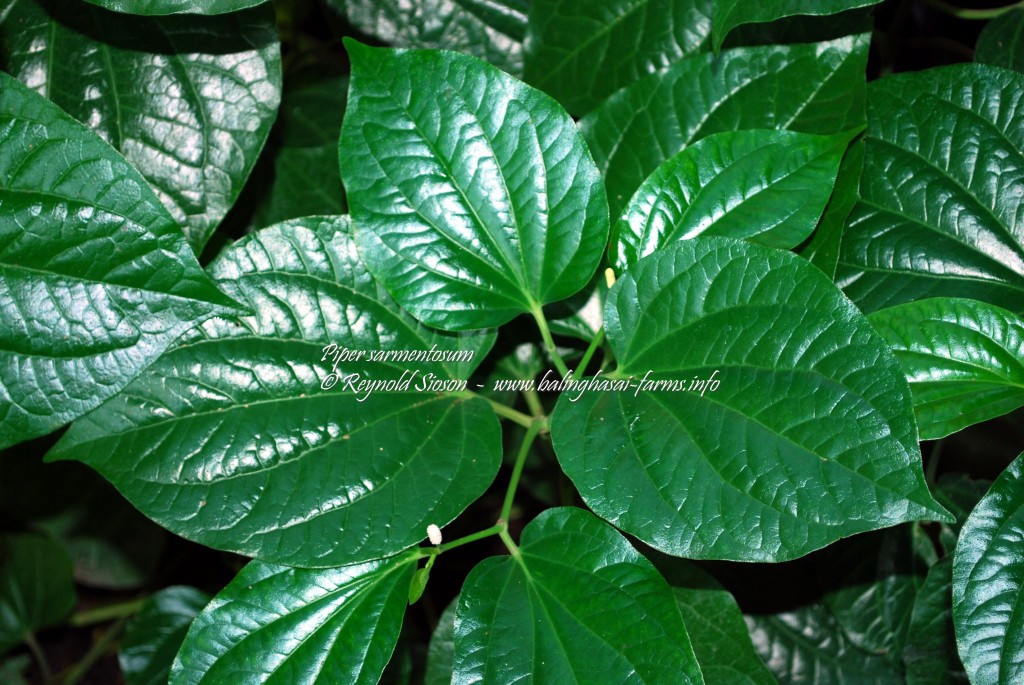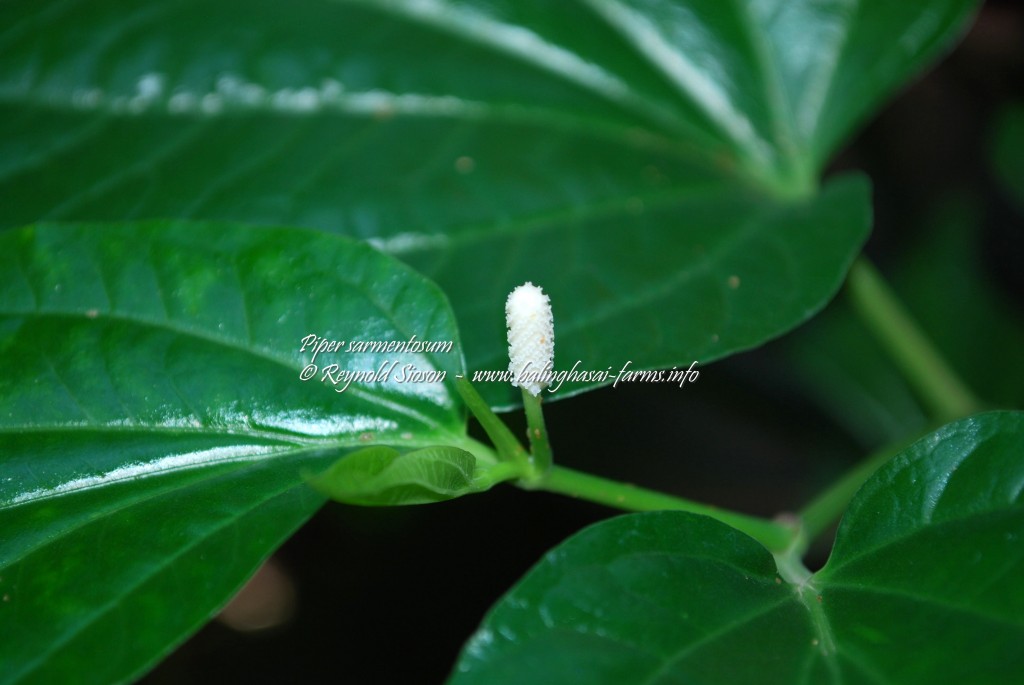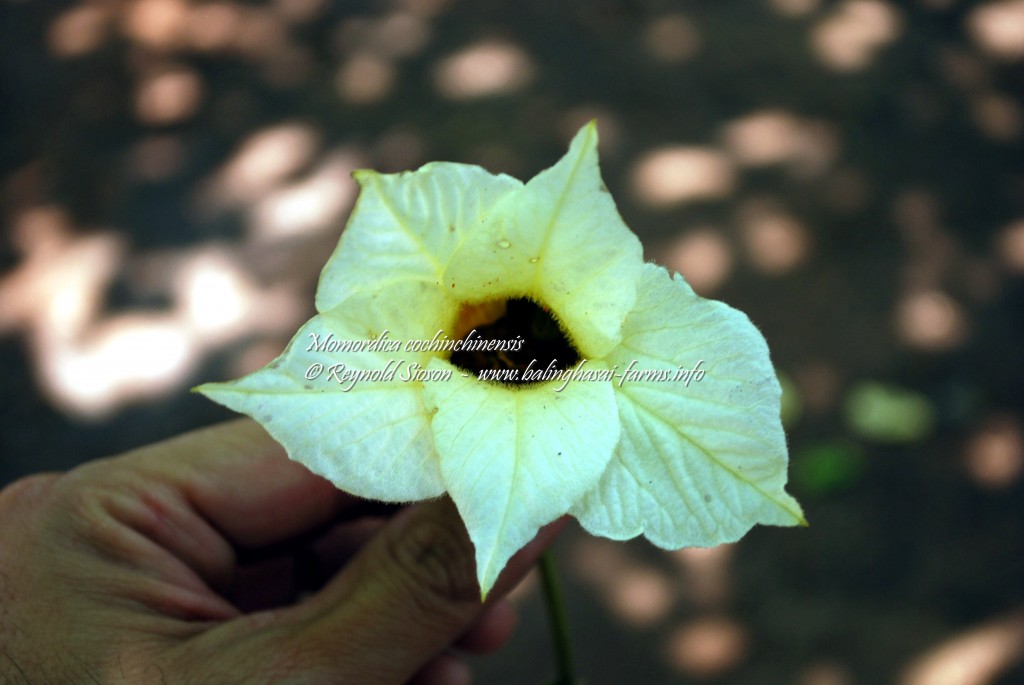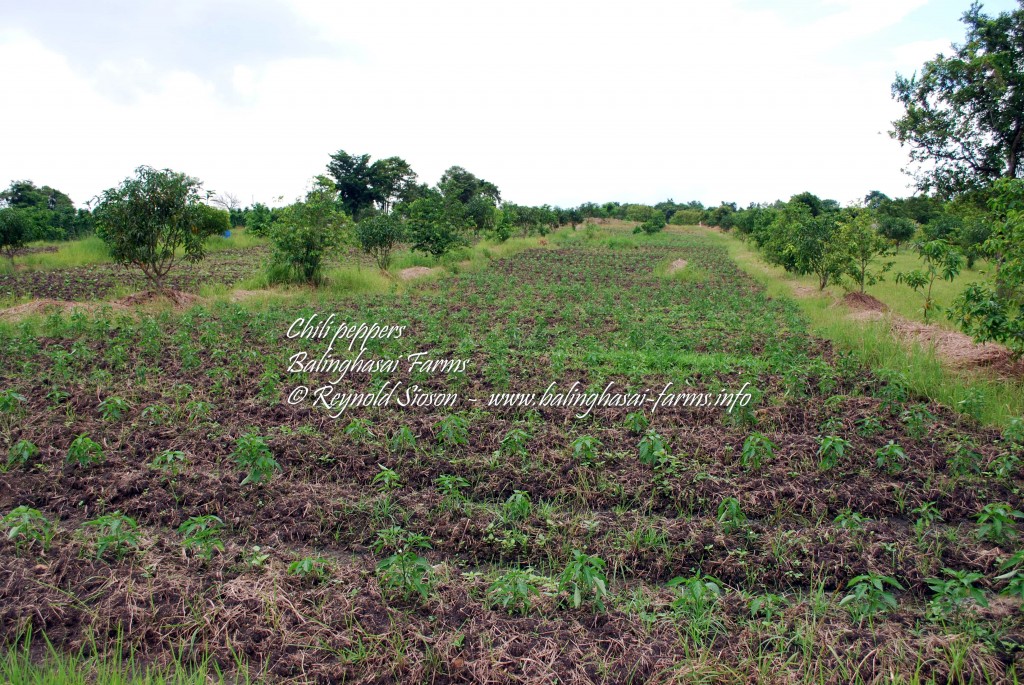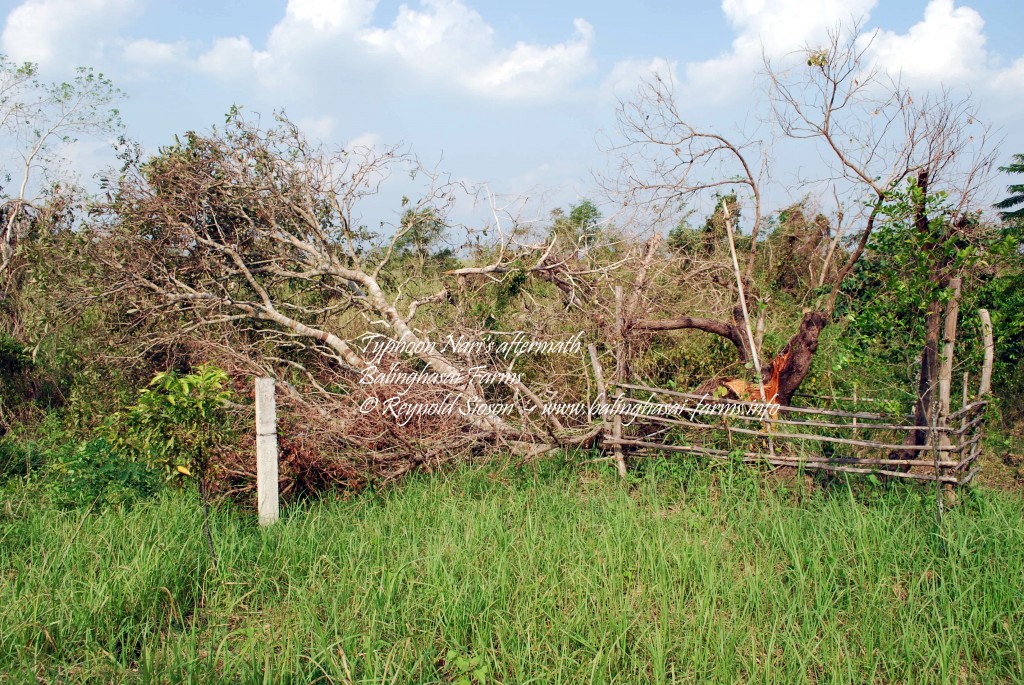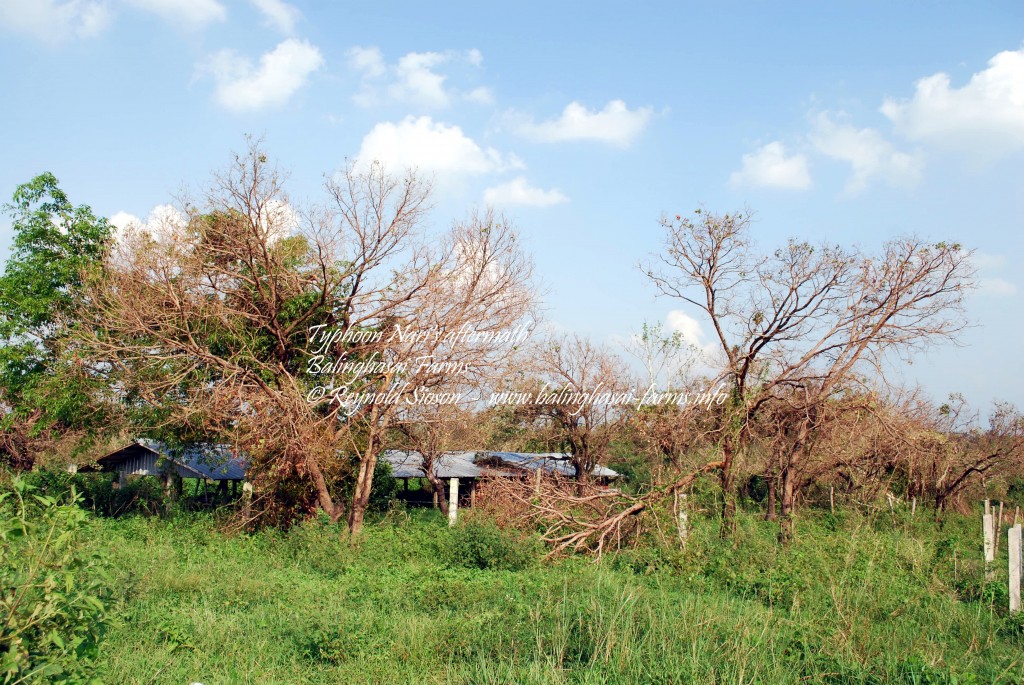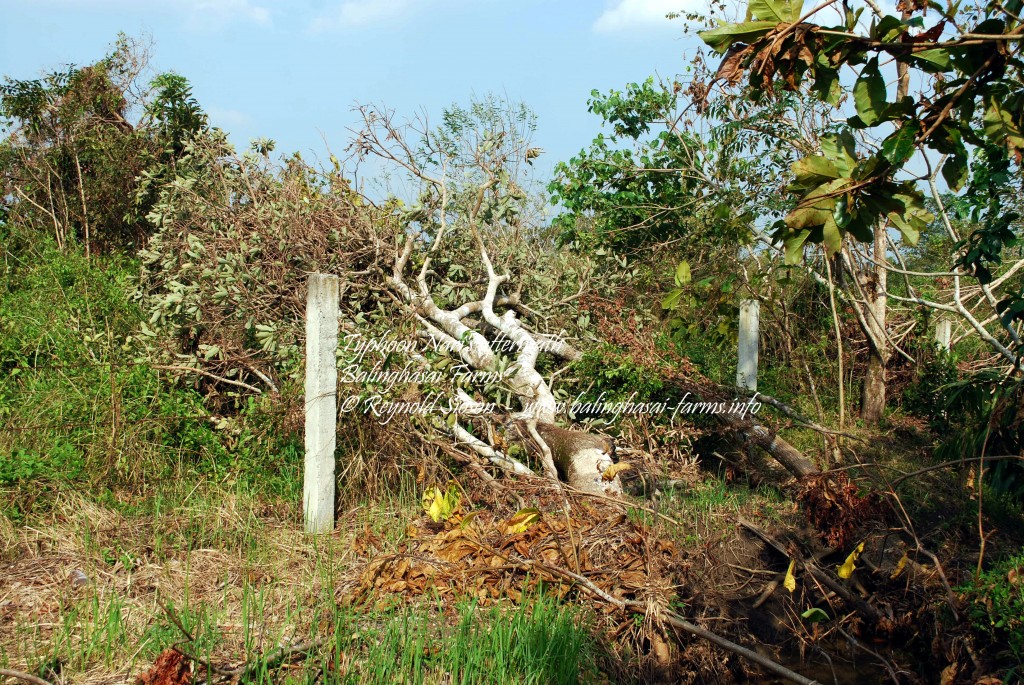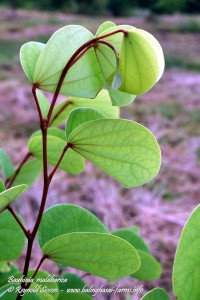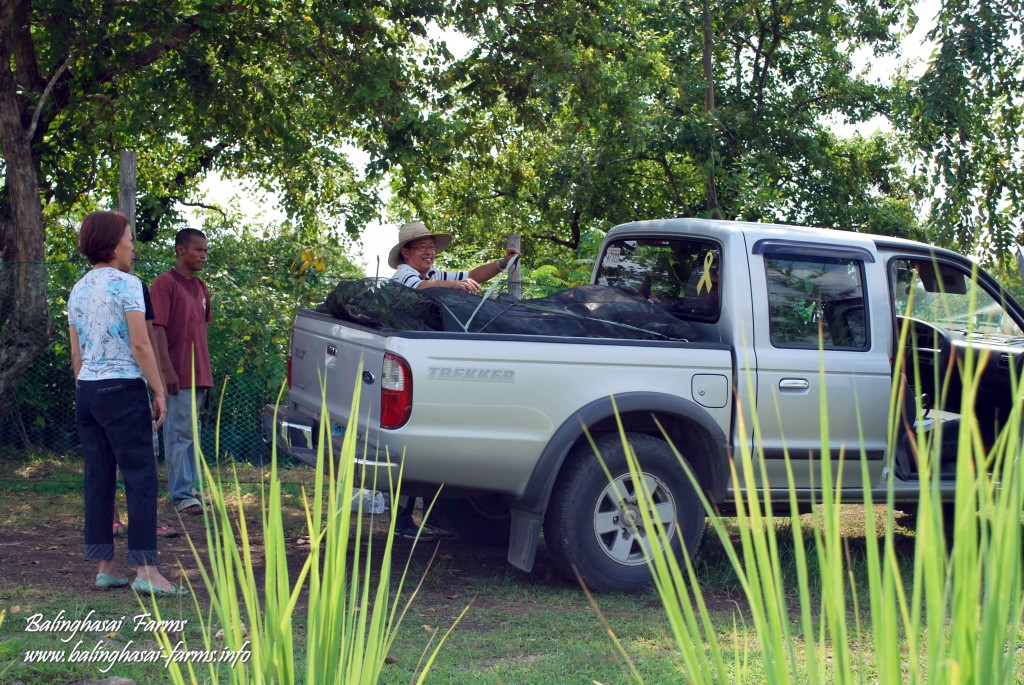Photo specimen : Cultivated
Specimen height : 1/2 meter
Trade names : Wild betel, Kadok, Chaphlu
Botanical name : Piper sarmentosum
Family : Piperaceae
Traits : Evergreen; Fast-growing; Herbaceous creeper; Low to medium altitude species; Perrenial; Shade tolerant
Recommendations : Backyards; Edible gardening; Farms; Home gardens; Landscaping; Large gardens; Living mulch; Medicinal plant; Natural ground cover; Ornamental; Pharmacological uses; Plantations; Potted/Container plant; Public spaces; Reclamation; Urban parks; Urban greening; Wildcrafting
Used for : Leaves are eaten with salad as condiment or used as vegetable or edible food wrap or as an alternative to Piper betel; Leaves, roots and fruits have uses in traditional medicine
Native range : India, Andaman Islands, China and Southeast Asia (including the Philippines)
National conservation status : Not threatened
Further reading :
An Investigation of the Vegetative Anatomy of Piper sarmentosum, and a Comparison with the Anatomy of Piper betle (Piperaceae) (Vijayasankar Raman, Ahmed M. Galal, Ikhlas A. Khan) file:///C:/Users/user/Downloads/Piper%20sarmentosum_anatomy.pdf
Evidence-based Complementary and Alternative Medicine - Does Oral Ingestion of Piper sarmentosum Cause Toxicity in Experimental Animals? (Maizura Mohd Zainudin, Zaiton Zakaria, Nor Anita Megat Mohd Nordin and Faizah Othman) http://www.hindawi.com/journals/ecam/2013/705950/
Natural Antioxidants: Piper sarmentosum (Kadok) and Morinda elliptica
(Mengkudu) (Vimala Subramaniam, Mohd. Ilham Adenan, Abdull Rashih Ahmad & Rohana Sahdan) http://nutriweb.org.my/publications/mjn009_1/mjn9n1_art5.pdf (697)
